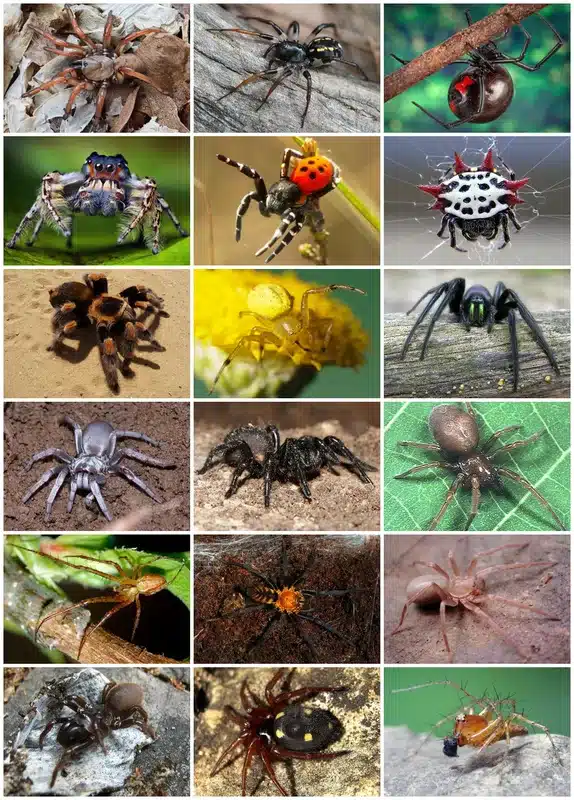Knowing spider names can make the difference between managing a minor pest issue and dealing with a major infestation. In my years working in areas like Mt. Vernon, where trees and moisture create perfect spider habitats, I’ve seen how quickly these arachnids build up in home eaves. Our two-pronged approach—removing current webs with a webster and applying non-repellent perimeter treatments—works because we understand the different species we’re targeting.
Having worked directly with dozens of homeowners concerned about spider activity, I’ve learned that identifying spiders by their proper names helps both with peace of mind and effective home protection. When you can distinguish between a harmless jumping spider and a black widow, you make better decisions about treatment strategies.
Why Unique Spider Names Matter for Home Protection
Understanding spider names goes beyond simple curiosity. Each species has unique behaviors, web patterns, and seasonal activity that affects how we approach treatment. Female spiders, for instance, often display different characteristics than males, and knowing these differences helps target our control efforts more effectively.
The scientific classification system provides a structured way to identify these eight-legged creatures. From tiny cellar spiders to giant fishing spiders found near water sources, each name tells a story about the animal’s characteristics and habits.
When dealing with spiders around your home, proper identification helps determine whether you’re looking at a beneficial predator or a species that requires professional attention. This knowledge becomes especially important when deciding between DIY approaches and calling licensed technicians.
Unique Spider Names and Scientific Classification
The world of spider names starts with understanding that these creatures belong to the arachnid class, making them fundamentally different from insects. As explained in our guide on whether spiders are bugs, spiders have distinct body segments called the cephalothorax and abdomen, along with eight legs and specialized silk-producing organs called spinnerets.
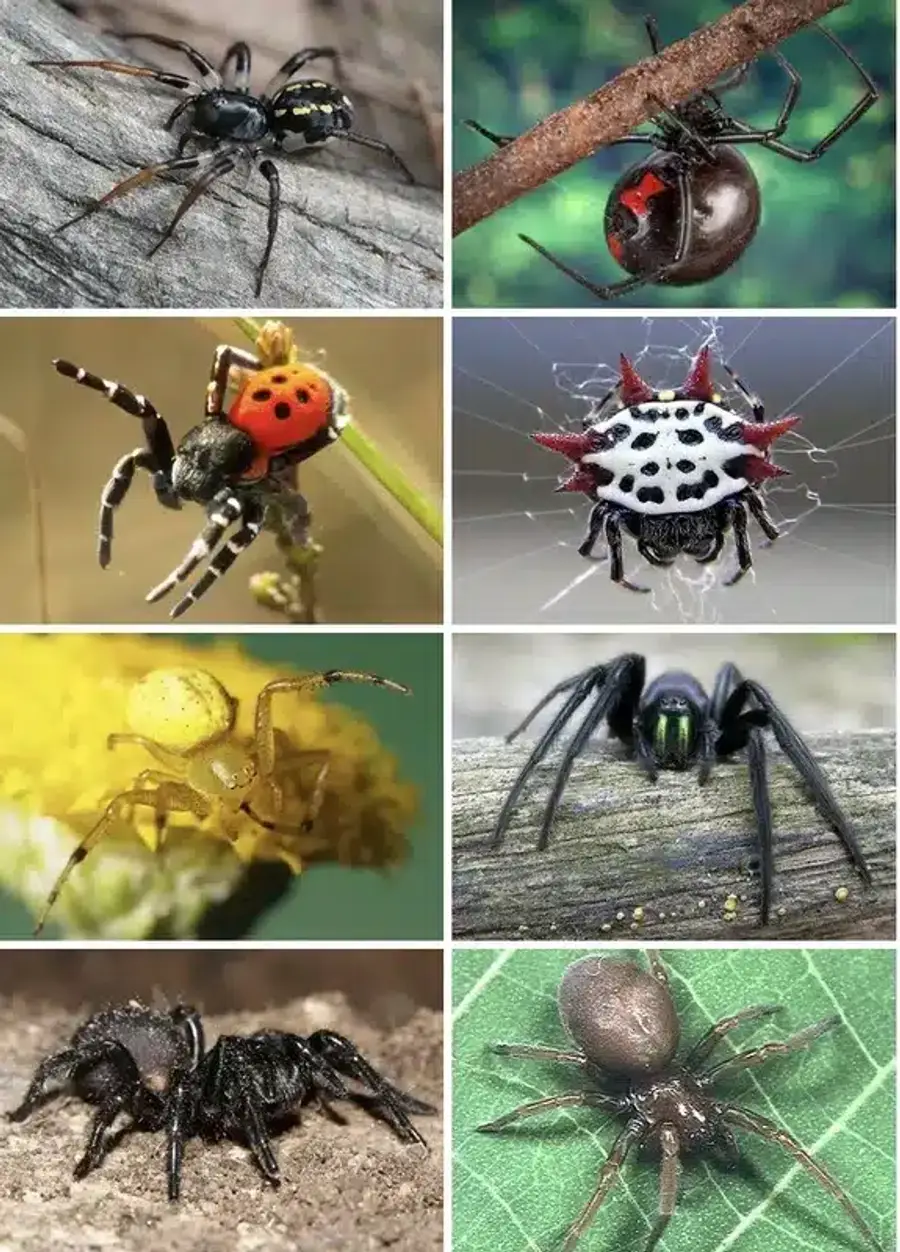
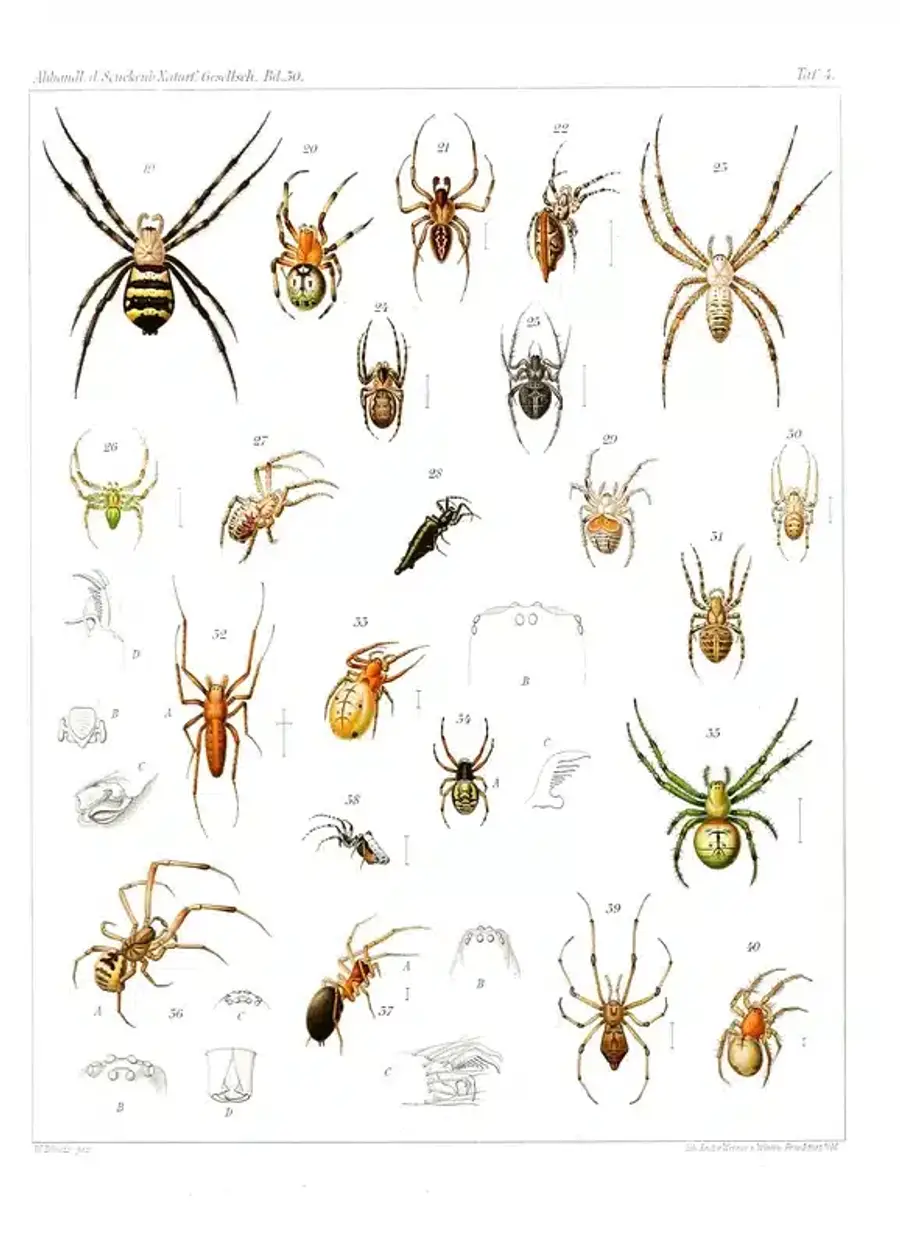
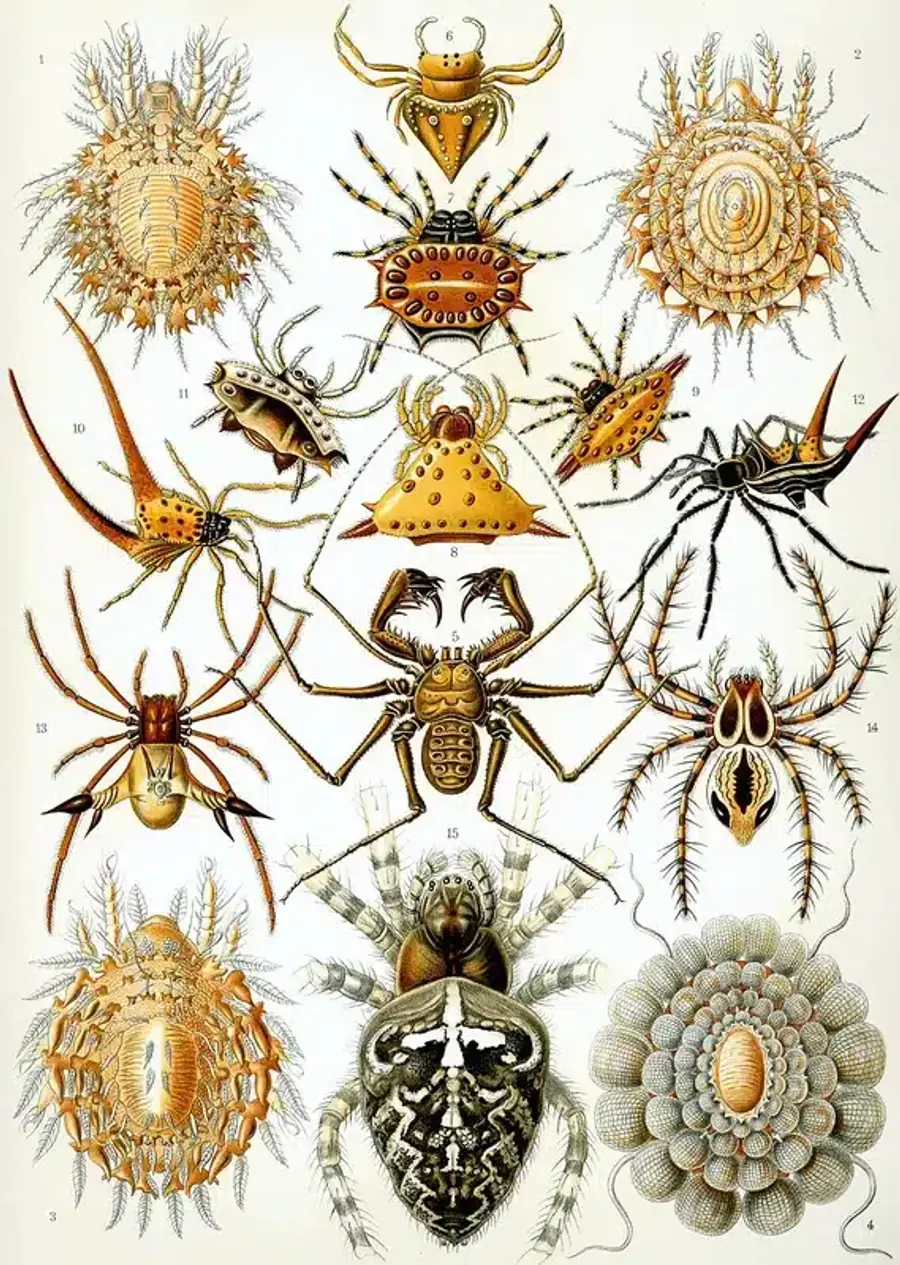
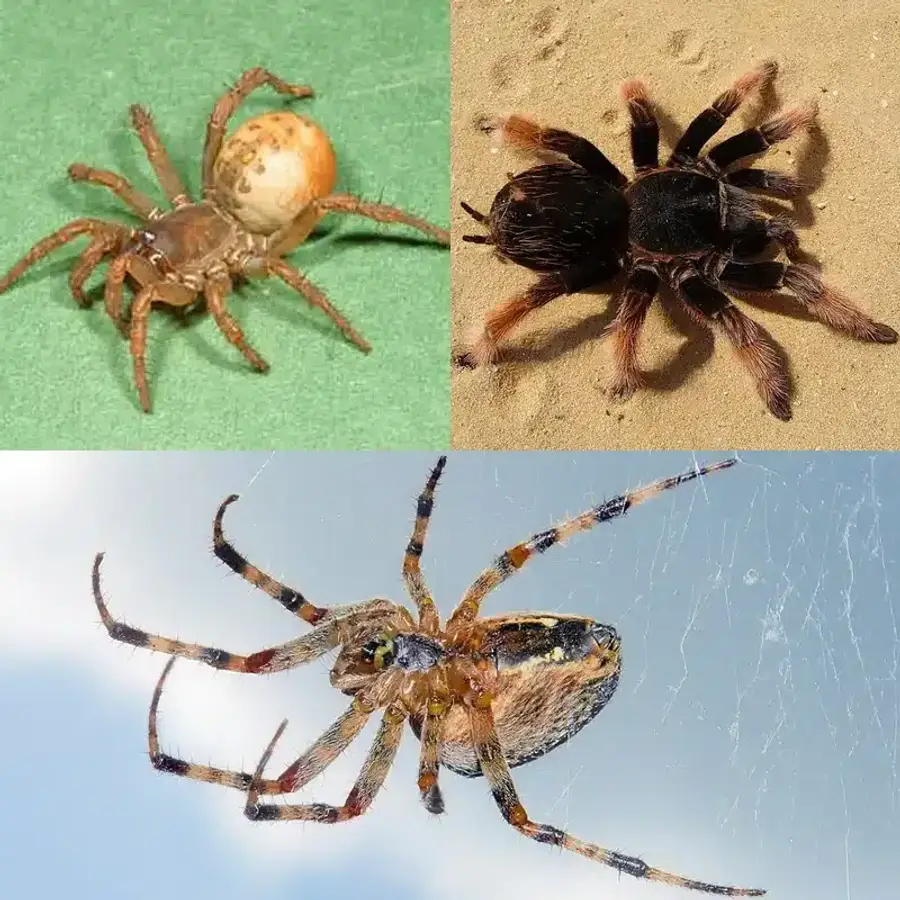
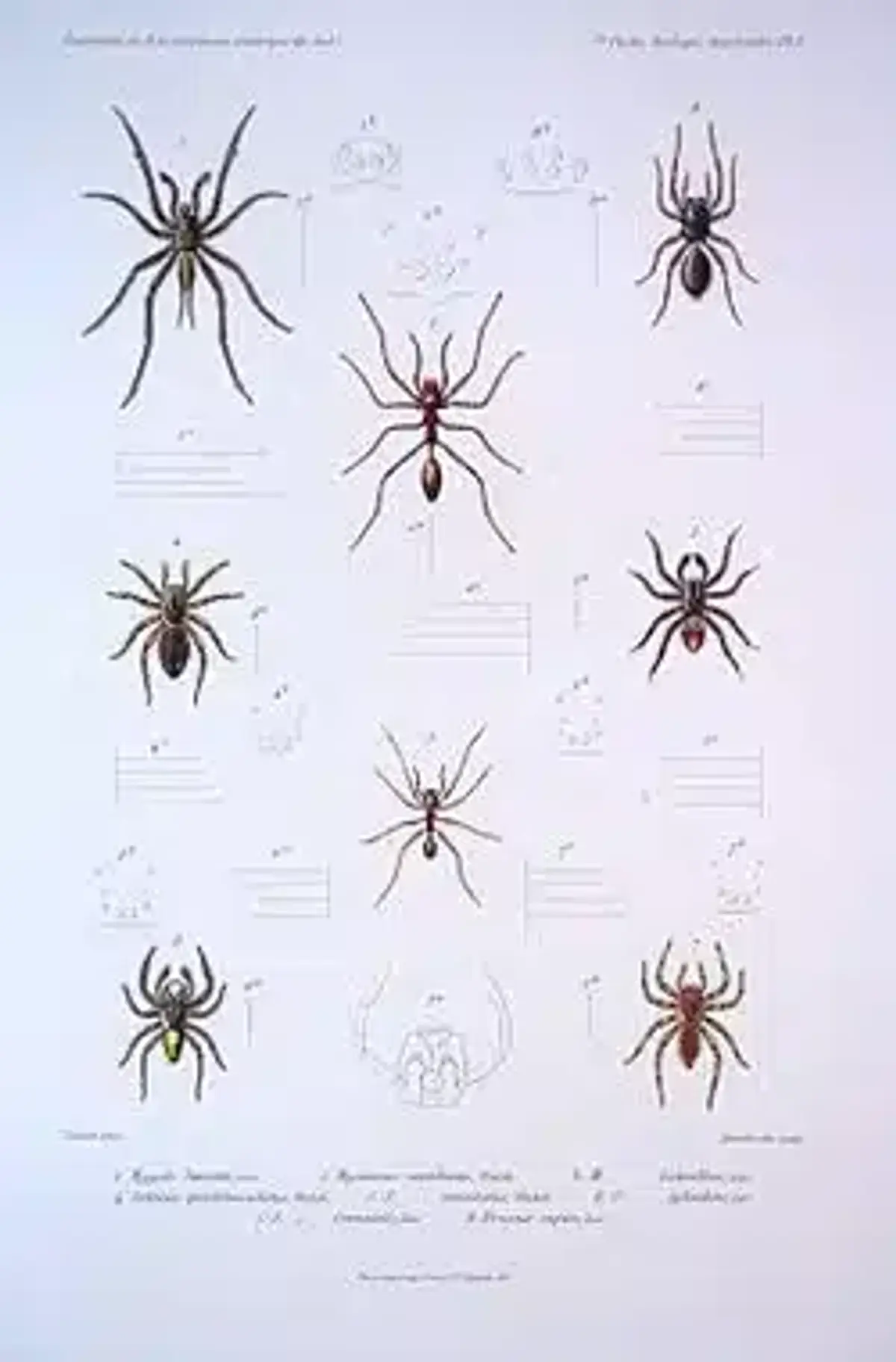
Scientific names follow a two-part system where the first part indicates the genus and the second specifies the species. This creates a universal language that helps pest control professionals worldwide communicate precisely about the same creatures. Common names, while easier to remember, can vary by region and sometimes cause confusion.
The fascinating variety of spider names reflects the incredible diversity of these arachnids. From names inspired by their appearance to those honoring the scientists who discovered them, each designation carries meaning that helps with identification and understanding.
Spider Names by Family: Orb-Weavers and Cobweb Spiders
Orb-Weaver Spider Names
Argiope aurantia, commonly called the yellow garden spider, stands out as one of the most recognizable species homeowners encounter. These striking spiders create large, circular webs up to 60 centimeters across, often featuring a distinctive zig-zag pattern called a stabilimentum. The female spider can reach 19-28 millimeters in body length and displays bold black and yellow coloration.
Araneus diadematus, known as the European garden spider, presents a more subtle appearance with cruciform spots on its abdomen. According to research from the University of Maryland, these spiders commonly appear on houses and shrubs during fall months. Their webs often survive morning dew, creating those photogenic displays many homeowners notice in their gardens.
These orb-weavers contribute significantly to natural pest control by capturing flying insects in their intricate web structures. The silk engineering of these species represents some of nature’s most efficient trap designs.
Cobweb Spider Names
Parasteatoda tepidariorum, the common house spider, creates the dusty, tangled webs that accumulate in corners and undisturbed areas. These brown spiders measure 5-6 millimeters and often display chevron patterns on their abdomens. Their abandoned webs collect dust over time, creating the classic “cobweb” appearance that gives this family its name.
The Latrodectus genus includes the medically important black widow spiders. Latrodectus mactans (southern black widow) and L. variolus (northern black widow) both feature the characteristic red hourglass marking, though the northern variety shows broken spots rather than a continuous pattern. These species build irregular webs in secluded areas like woodpiles and sheds.
Jumping Spider Names and Hunting Behavior
Phidippus audax, the bold jumping spider, earns its name through impressive hunting abilities and fearless personality. These compact hunters can pounce up to 50 times their body length and possess some of the sharpest vision in the spider world. Their iridescent green chelicerae (mouthparts) make them easily identifiable among common house spiders.
The jumping spider family includes numerous colorful species with equally creative names. Many Habronattus species display intricate patterns and engage in elaborate courtship dances that would rival any nature documentary. These spiders don’t build webs but instead use silk as a dragline while hunting during daylight hours.
Unlike web-building species, these active hunters patrol surfaces looking for prey. They’re often seen on garden fencing, home siding, and outdoor furniture where they hunt flies, mosquitoes, and other small insects.
Wolf Spider Names and Wandering Hunters
Wolf Spider Identification
Tigrosa helluo represents one of the larger wolf spiders homeowners encounter, with females reaching 9-18 millimeters in length. These brown spiders feature pale stripes on their carapace and hunt primarily at night in leaf litter and basement areas. The maternal behavior of female spiders in this species is particularly notable—mothers carry egg sacs attached to their spinnerets and later transport dozens of spiderlings on their backs.
Pardosa species include smaller wolf spiders that patrol lawns and garden areas. These nimble hunters don’t build webs but instead rely on speed and excellent eyesight to capture prey. Their wandering nature means they often turn up indoors during fall months when seeking overwintering sites.
Nursery-Web and Fishing Spider Names
Dolomedes tenebrosus, the dark fishing spider, impresses with its size—females can span 15-26 millimeters in body length. These spiders inhabit tree trunks and wooden structures near water. The mother’s dedication to protecting her young rivals any creature in nature, as she carries golf-ball-sized egg sacs in her chelicerae before constructing protective nursery webs.
Dolomedes triton, the six-spotted fishing spider, earned its name through remarkable aquatic hunting abilities. According to Pennsylvania State University research, these spiders can capture prey up to five times their size, including tadpoles and small fish.
Creative Spider Names from Mythology and Popular Culture
Many spider names draw inspiration from ancient mythology and legend. Arachne, the tragic figure from Greek mythology who was transformed into the first spider, provides inspiration for countless arachnid names. Similarly, Anansi, the trickster spider god from West African folklore, influences naming conventions in popular culture.
Pet spider enthusiasts often choose names that reflect their companion’s unique personality traits. A playful jumping spider might earn a name like “Bounce” or “Zippy,” while a mysterious tarantula could be called “Shadow” or “Mystic.” The name can reflect the creature’s appearance, behavior, or the owner’s personal preference.
Creative names inspired by nature often work well for these fascinating creatures. Consider how the spider’s coloration, leg patterns, or web-building style might suggest a fitting designation for your eight-legged friend.
Regional Spider Names in Virginia, Maryland, and DC
Funnel and Grass Spider Names
Agelenopsis pennsylvanica builds the horizontal sheet webs with funnel entrances that homeowners notice on lawns and shrubbery. These fast runners measure 8-14 millimeters and become especially active during autumn when cooling nights drive them toward indoor shelter. Their webs create those dew-covered displays that glitter across grass on early mornings.
Cellar Spider Names
Pholcus phalangioides, the long-bodied cellar spider, gets confused with “daddy longlegs” but represents a true spider species. With bodies measuring 6-8 millimeters and legs extending up to 50 millimeters, these creatures shake their webs violently when disturbed. Female spiders carry their egg bundles in their mouthparts—a behavior that distinguishes them from harvestmen.
Sac Spider Names
Cheiracanthium inclusum and C. mildei, known as sac spiders, create silk retreats in upper wall corners during daylight hours. These pale yellow-green hunters measure 4-10 millimeters and prowl at night for prey. Virginia Tech research indicates these species likely cause most minor “mystery bites” that heal without medical intervention.
Rare and Exotic Spider Names
Sphodros rufipes, the red-legged purse-web spider, represents one of the most fascinating arachnids in our region. These mygalomorph spiders belong to the same suborder as tarantulas, though they’re much smaller. Females live 10-15 years inside silk tubes that run up tree bases, making them among the longest-lived spiders in North America.
The purse-web spider’s hunting method seems almost alien—insects walking on the silk tube trigger vibrations that prompt the spider to bite through the silk and drag prey inside. Only the silk tube remains visible, making these exotic creatures nearly invisible to casual observers.
Seasonal Activity and Spider Behavior
University of Maryland extension research shows distinct seasonal patterns in spider activity. Spring brings ballooning spiderlings that create gossamer threads across farm fields. Summer marks peak activity for orb-weavers like Argiope species and the beginning of black widow mating season.
Late summer and fall produce the most dramatic spider encounters as Araneus species mature and wolf spiders begin wandering into basements. Many homeowners notice increased spider activity during September through November as these creatures seek overwintering sites.
Winter significantly reduces spider diversity, with only cellar spiders, cobweb spiders, and some sac species remaining active indoors. Most other species overwinter as eggs or juveniles hidden in bark, leaf litter, or beneath snow cover.
Common Spider Misidentifications
The term “daddy longlegs” creates confusion between true spiders (Pholcidae family) and harvestmen (Opiliones order). While both appear in homes, only cellar spiders produce webs and inject venom into prey. Harvestmen lack venom glands entirely and don’t spin silk.
False widow identification mistakes occur frequently, with harmless Steatoda species often confused for dangerous Latrodectus black widows. The key differences include body size, web structure, and the distinctive red hourglass marking that only true widows display.
Brown recluse hysteria affects many regions where these spiders don’t actually live. These arachnids remain largely absent from Virginia, Maryland, and DC, with only rare hitchhiker specimens occasionally appearing. Understanding this geographic reality prevents unnecessary fear and inappropriate treatment approaches.
When Spider Names Indicate Health Concerns
Only one genus in our region consistently poses medical risks: Latrodectus, the black widow spiders. Both the southern (L. mactans) and northern (L. variolus) species produce neurotoxic venom that can cause systemic symptoms requiring medical attention. Research shows that severe cases may require calcium gluconate or antivenom treatment.
Cheiracanthium species, the sac spiders, occasionally bite humans but cause only minor, temporary discomfort. Studies tracking verified bites show pain lasting less than two hours with no tissue necrosis—a far cry from the scary stories often circulated about spider bites.
Most other spider species in our region lack the ability to cause significant medical problems. Their fangs either can’t penetrate human skin or their venom only affects small prey animals.
Professional Treatment Approaches
Our experience treating spider infestations has shown that understanding species names and behavior patterns dramatically improves treatment success. Different spiders require different approaches—web builders respond to perimeter treatments, while hunting species need targeted spot applications.
The webster tool effectively removes existing webs from eaves and corners, while non-repellent sprays create long-lasting barriers that spiders cross unknowingly. This combination addresses both current populations and prevents future establishment without driving spiders to untreated areas.
Seasonal timing matters significantly in spider control. Treating during peak activity periods—typically late summer through early fall—provides maximum effectiveness. Our quarterly approach ensures treatments align with natural spider life cycles for optimal results.

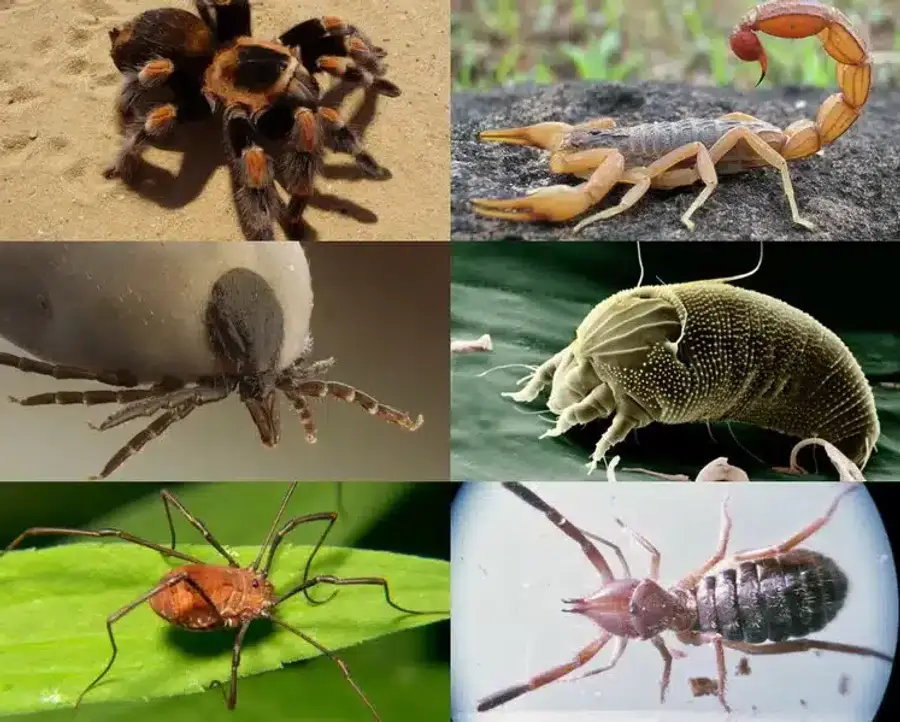
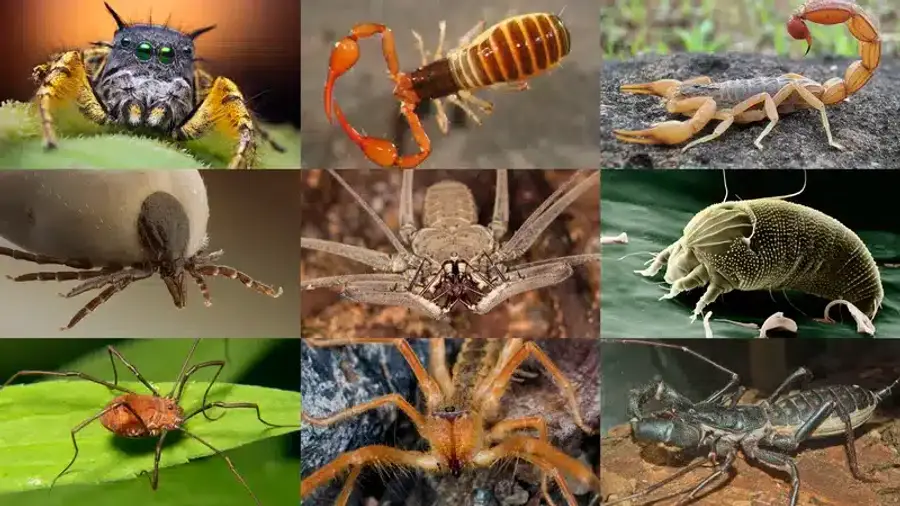
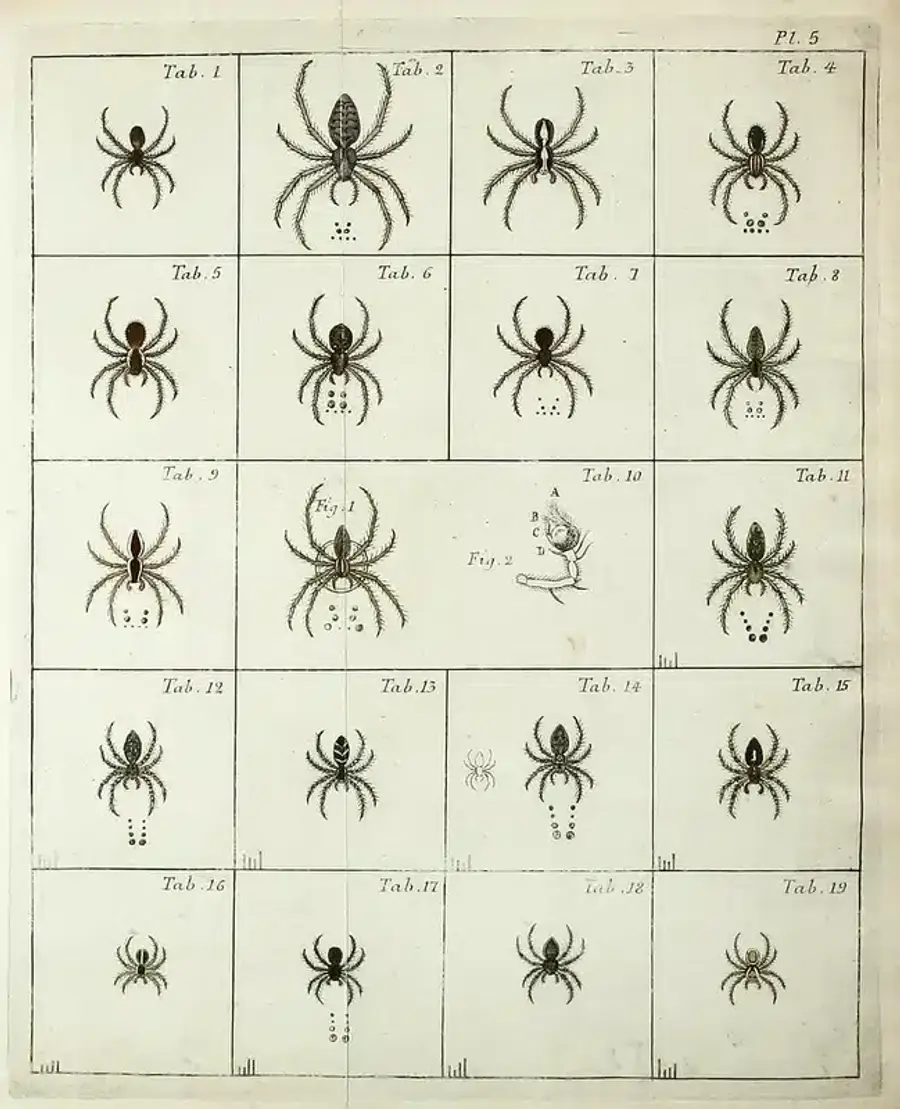
Ecological Benefits of Named Spider Species
Understanding individual spider species helps homeowners appreciate their ecological value. Jumping spiders excel at controlling flies and mosquitoes around outdoor living areas. Orb-weavers capture enormous quantities of flying insects that would otherwise become household pests.
Wolf spiders patrol ground areas at night, consuming cockroaches, crickets, and other crawling pests that might otherwise find their way indoors. Even the often-maligned cellar spiders contribute by catching flies, mosquitoes, and gnats in basements and storage areas.
These natural predator-prey relationships mean that completely eliminating all spiders often leads to increased problems with the insects they normally control. A balanced approach focuses on managing problematic species while allowing beneficial ones to continue their pest control work.
Knowing spider names helps homeowners make informed decisions about which species deserve tolerance and which require professional attention. This knowledge-based approach leads to more effective, targeted treatments that protect homes without disrupting beneficial natural processes.
Frequently Asked Questions
What are some spider names?
+
Common spider names homeowners encounter include the yellow garden spider (Argiope aurantia), bold jumping spider (Phidippus audax), common house spider (Parasteatoda tepidariorum), and black widow (Latrodectus species). Each name reflects either the spider's appearance, behavior, or the scientist who first described the species. These names help distinguish between the dozens of species found in Virginia, Maryland, and DC homes.
What is a fancy name for spiders?
+
Arachnid serves as the scientific term for spiders and their relatives, while Araneae specifically designates the spider order. Many people use poetic terms like "eight-legged architects," "silk weavers," or "nature's tiny predators." In mythology, names like Arachne (from Greek legends) and Anansi (from West African folklore) provide more elegant alternatives to simply calling them spiders.
What is the mythical name for a spider?
+
Arachne represents the most famous mythical spider name, originating from Greek mythology where a skilled weaver was transformed into the first spider after challenging the goddess Athena. Anansi, the trickster spider god from West African culture, appears in countless folk tales and has influenced modern literature. These legendary names often inspire creative naming for pet spiders or fictional characters in games and stories.
What are cute spiders called?
+
Jumping spiders earn the title of "cute" from many people due to their large eyes, fuzzy appearance, and curious personality. Peacock spiders (though not native to our region) get attention for their colorful displays and tiny size. Many people find orb-weavers endearing when they're small, calling them "garden jewels" or "tiny web architects." The key trait that makes any spider seem cute is usually its small size and non-threatening behavior.
How do I choose a name for my pet spider?
+
Consider your spider's species characteristics, appearance, and behavior when selecting a name. A tarantula with brown coloring might suit names like "Cocoa" or "Bruno," while a fast-moving wolf spider could be called "Dash" or "Scout." Some owners prefer names that reflect the animal's mysterious nature, like "Shadow" or "Phantom." The name can reflect your personal preference, the spider's unique markings, or even pay tribute to famous spiders from popular culture.
Are there specific female spider names?
+
Female spiders often display different characteristics than males, being larger and more prominent in most species. Many people choose feminine names based on the spider's appearance—"Ruby" for a red-marked spider, "Luna" for pale species, or "Athena" connecting to spider mythology. Female black widows, being the dangerous ones in the relationship, sometimes get powerful names like "Cleopatra" or "Empress" that reflect their commanding presence.
What spider names come from scientific discovery?
+
Many spider names honor the scientists who first described them or the locations where they were discovered. The genus Latrodectus combines Latin words meaning "secret biter," while Phidippus refers to a character from Greek literature. Species names often end in geographic references—like "pennsylvanica" for Pennsylvania—or descriptive terms like "audax" meaning bold. These scientific names provide universal identification regardless of local common names.
How do spider names help with identification?
+
Knowing proper spider names helps distinguish between similar-looking species with different behaviors and risk levels. The name Steatoda (false widow) versus Latrodectus (true widow) makes a significant difference in how seriously you should take an encounter. Cheiracanthium (sac spiders) versus Loxosceles (brown recluse) helps determine actual bite risk in our region. Proper names eliminate confusion that common names sometimes create.
What are some fun spider names for kids?
+
Children often enjoy playful names that reflect spider behaviors—"Zipline" for web-swingers, "Tippy" for web-shaking cellar spiders, or "Speedy" for fast-running wolf spiders. Names like "Webster" (after web-making), "Spinner," or "Charlotte" (from the famous children's book) make spiders seem less scary. Jumping spider species work well with bouncy names like "Hop," "Skip," or "Bounce" that match their movement style.
Do spider names vary by region?
+
Common names definitely vary by location, which is why scientific names remain consistent worldwide. What some call a "house spider" in Virginia might be called a "common spider" elsewhere, even when referring to the same Parasteatoda tepidariorum species. Regional folklore and local culture influence common names, but the scientific binomial system ensures that pest control professionals can communicate precisely about species regardless of local terminology.
With five years of hands-on experience in the pest control industry, George Schulz is a registered technician with the Virginia Pest Management Association and a proud third-generation professional in a family business that's been protecting homes for over 57 years. He manages and trains a team of service pros while also leading internal research efforts—recently spearheading a deep-dive review of thousands of documents on pest control materials to hand-pick the most kid and pet friendly, most effective solutions tailored specifically for homes in the DC metro area.
